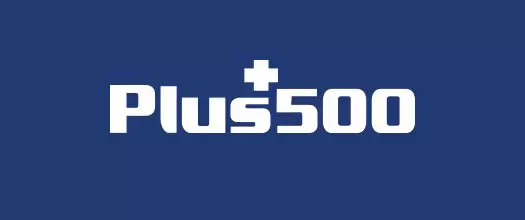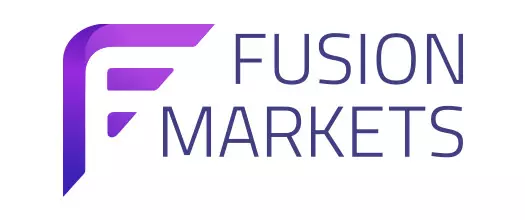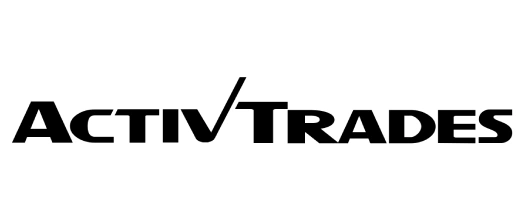Our team of expert traders tested several regulated and trustworthy palladium trading brokers and compiled a top list of the best among them. Every platform allowing CFDs on palladium received a quality score based on several factors, including Trustpilot rating, regulation, fees and commissions, available trading platforms, customer service, and more.
 Plus500 USThis content applies only to Plus500 US and clients from the United States. Trading futures involves the risk of loss.
Plus500 USThis content applies only to Plus500 US and clients from the United States. Trading futures involves the risk of loss. eToro61% of retail investor accounts lose money
eToro61% of retail investor accounts lose money Fusion Markets74-89% of retail's CFD accounts lose money
Fusion Markets74-89% of retail's CFD accounts lose money FP Markets73.85% of retail investor accounts lose money
FP Markets73.85% of retail investor accounts lose money Global Prime74-89% of retail CFD accounts lose money
Global Prime74-89% of retail CFD accounts lose money Pepperstone75.5% of retail investor accounts lose money
Pepperstone75.5% of retail investor accounts lose money
Palladium trading brokers
Knowing how to trade palladium inside out is indeed essential, but finding a broker that offers premium-quality services is just as important. If they want to maximise their profit potential and enjoy a top-quality trading experience, traders should make sure that the services the broker offers suit their needs. To achieve this, they should consider the available account types, how long payments take, whether there are any extra fees, whether the broker charges a commission, whether they can trade palladium on the go, whether there is around-the-clock customer support, and so on. These are ten of the leading brokers that offer palladium trading.
 TRADE NOWREAD REVIEWPlatformscTrader, DupliTrade, Fusion+ Copy Trading, MetaFX, MetaTrader 4, MetaTrader 5, TradingViewMin Deposit$0FeesDeposits and withdrawals are fee-freeDeposit MethodsCommissions$2,25 per lotSpreadEUR/USD: AVG 0.93 pips, GBP/USD: AVG 1 pips, USDJPY: AVG 1.7 pipsWithdrawal MethodsLeverage EU1:10Leverage non-EU1:500 (ASIC | Pro Account), 1:30 (ASIC | Retail Account), 1:500 (VFSC | Retail Account)InstrumentsCommodity CFDs, Crypto CFDs, Forex CFDs, Index CFDs, Metal CFDs, Stock CFDsAll financial products involve risk and you should ensure you understand the risk involved as certain financial products may not be suitable for everyone. Trading in margin foreign exchange and derivatives carries a high level of risk and you may incur a loss that is far greater than the amount you invested. Past performance of any product described on this website is not a reliable indication of future performance. Any information or advice contained on this website is general in nature and has been prepared without taking into account your objectives, financial situation or needs.
TRADE NOWREAD REVIEWPlatformscTrader, DupliTrade, Fusion+ Copy Trading, MetaFX, MetaTrader 4, MetaTrader 5, TradingViewMin Deposit$0FeesDeposits and withdrawals are fee-freeDeposit MethodsCommissions$2,25 per lotSpreadEUR/USD: AVG 0.93 pips, GBP/USD: AVG 1 pips, USDJPY: AVG 1.7 pipsWithdrawal MethodsLeverage EU1:10Leverage non-EU1:500 (ASIC | Pro Account), 1:30 (ASIC | Retail Account), 1:500 (VFSC | Retail Account)InstrumentsCommodity CFDs, Crypto CFDs, Forex CFDs, Index CFDs, Metal CFDs, Stock CFDsAll financial products involve risk and you should ensure you understand the risk involved as certain financial products may not be suitable for everyone. Trading in margin foreign exchange and derivatives carries a high level of risk and you may incur a loss that is far greater than the amount you invested. Past performance of any product described on this website is not a reliable indication of future performance. Any information or advice contained on this website is general in nature and has been prepared without taking into account your objectives, financial situation or needs.There are many choices for brokers that offer palladium trading, and Fusion Markets certainly deserves consideration. When presenting its services, the broker adheres to several simple principles, including offering cutting-edge technology, dedicated customer support, and low prices.
There are plenty of reasons for the broker’s growing popularity, and, first and foremost, Fusion Markets is preferred because its commission rate is 36% lower than that of some of its closest competitors. The broker puts the satisfaction of its users first, and, because of this, Fusion Markets has waived all funding-related fees. Additionally, traders can start trading palladium or any other asset with as little capital as they wish, as there is no minimum account size.
To deliver a seamless trading experience, the broker has ensured that its users can access the world’s markets quickly and easily. Fusion Markets gives its users a choice of the MT4 and MT5 platforms, which are accessible both on the go and on desktop devices.
Traders can choose between Zero and Classic accounts, and, depending on their pick, they will benefit from spreads starting at 0.0 or 0.8 and different commissions. While the Zero account is tailor-made for traders with more experience in palladium trading or trading other precious metals, the Classic account is more suitable for traders who are just taking their first steps.
Before joining the broker of their choice, traders should make sure that it is trustworthy, and, in the case of Fusion Markets, it is regulated by the Vanuatu Financial Services Commission and the Australian Securities and Investments Commission.
 TRADE NOWREAD REVIEWRegulatorsCySEC (Cyprus, # 371/18), FSAS (Seychelles, # SD130), FSCA (South Africa, # 50926), SCB (Bahamas), ASIC (Australia, # 286354), FSCM (Mauritius, # GB21026264)PlatformscTrader, IRESS, MetaTrader 4, MetaTrader 5, TradingView2. FP MarketsMin Deposit$50 (AU$100)Fees
TRADE NOWREAD REVIEWRegulatorsCySEC (Cyprus, # 371/18), FSAS (Seychelles, # SD130), FSCA (South Africa, # 50926), SCB (Bahamas), ASIC (Australia, # 286354), FSCM (Mauritius, # GB21026264)PlatformscTrader, IRESS, MetaTrader 4, MetaTrader 5, TradingView2. FP MarketsMin Deposit$50 (AU$100)Fees- No fees for standard accounts for all instruments
- A fee of AUD/CAD3,50 when trading Forex and metals for raw accounts
- Trading all other instruments is fee-free
Deposit MethodsCommissionsZero commission per lot for standard accounts and $3 per side for raw accountsSpreadEUR/USD: AVG 1.2 pips, GBP/USD: AVG 1.4 pips, USDJPY: AVG 1.5 pipsWithdrawal MethodsLeverage EU1:500 (CySEC | Pro Account), 1:30 (CySEC | Retail Account)Leverage non-EU1:30 (ASIC | Retail Account), 1:500 (FSAS | Retail Account)InstrumentsCommodity CFDs, Crypto CFDs, Energy CFDs, Forex CFDs, Index CFDs, Metal CFDs, Stock CFDsTrade Responsibly: Derivative products are highly leveraged, carry a high level of risk and are not suitable for all investors. Features of our products including fees and charges are outlined in the relevant legal documents available on our website. The legal documents should be considered before entering into transactions with us.With more than 15 years of trading experience, FP Markets is a one-stop destination for trading shares, cryptocurrencies, commodities, forex, indices, and metals, including palladium. Traders can choose from more than 10,000 markets across the instruments mentioned above and benefit from tight raw spreads and low commissions, making FP Markets a worthwhile choice for both seasoned traders and complete novices.
The account types offered by the broker are also designed with traders in mind, and FP Markets users can opt for either a Standard or a Raw account. Regardless of the account type they choose, traders receive full access to all instruments the broker offers, can benefit from maximum leverage of 1:500, and enjoy spreads starting from 0.0 or 1.0 pips.
The platform options offered by FP Markets include Iress, MT4, and MT5, all available on mobile and the web, giving traders the freedom to speculate on palladium or any other precious metal whenever and wherever they choose.
By joining the FP Markets community, traders benefit from personal account managers and multilingual customer support available around the clock. For any questions, they can contact the support team via email, phone, or live chat.
 TRADE NOWREAD REVIEWRegulatorsCONSOB (Italy, # 211), FCA (United Kingdom, # 434413), SCB (Bahamas, # 199667 B), CMVM (Portugal, # 433), FSCM (Mauritius, # GB24203277), CVM (Brazil, # 43050.917/0001-03)PlatformsMetaTrader 4, MetaTrader 5, Proprietary Web, TradingView3. ActivTradesMin Deposit$0Fees
TRADE NOWREAD REVIEWRegulatorsCONSOB (Italy, # 211), FCA (United Kingdom, # 434413), SCB (Bahamas, # 199667 B), CMVM (Portugal, # 433), FSCM (Mauritius, # GB24203277), CVM (Brazil, # 43050.917/0001-03)PlatformsMetaTrader 4, MetaTrader 5, Proprietary Web, TradingView3. ActivTradesMin Deposit$0Fees- 0.5% on deposits (EU/EEA cards)
- 1.5% on deposits (non EU/EEA cards)
- $12.50 for bank transfer withdrawals in USD
- £9 for bank transfers in GBP (SCB and FSC entities only)
- A $10 inactivity fee after 50 weeks
Deposit MethodsCommissionsNo commissionSpreadEUR/USD: AVG 0.5 pips, GBP/USD: AVG 0.8 pips, USDJPY: AVG 0.5 pipsWithdrawal MethodsLeverage EU1:10 (1:20 for Gold)Leverage non-EU1:400 (CMVM | Pro Account), 1:30 (CMVM | Retail Account), 1:1000 (FSC), 1:200 (SCB)InstrumentsBonds CFDs, Commodity CFDs, Crypto CFDs, ETF CFDs, Forex CFDs, Index CFDs, Share CFDsCFDs are complex instruments and come with a high risk of losing money rapidly due to leverage. 73% of retail investor accounts lose money when trading CFDs with this provider.You should consider whether you understand how CFDs work and whether you can afford to take the high risk of losing your money.At ActivTrades, you can trade palladium and about 27 other commodity markets via contracts for difference (CFDs) under favorable conditions in a secure environment regulated by the FCA (UK), CMVM (Portugal), CVM (Brazil), SCB (Bahamas), and FSC (Mauritius). The multi-licensed brokerage offers tight spreads across all commodity markets, quoting an average of 2 points for XPD/USD. The broker charges fees on commodity trades solely through the spreads and, at the time of publication, does not offer commission-based accounts.
Palladium traders can open positions as small as 0.01 lot, while the maximum is capped at 10 lots, each point valued at $100. Retail clients benefit from exceptionally high leverage for palladium under the Bahamas and Mauritius divisions, with ratios reaching 1:40 and 1:100, respectively. Traders can easily track palladium’s performance against the U.S. dollar, enjoying access to accurate real-time pricing and market sentiment.
ActivTrades strips away the complexity of online trading with an intuitive proprietary platform that runs seamlessly on most devices and requires no additional software installation. New customers can choose between individual and swap-free accounts. Additionally, UK and European clients have the option to apply for professional accounts if they meet the eligibility criteria. You can begin trading with any amount you wish, as ActivTrades imposes no minimum deposit. The minimum withdrawal is $25 for cryptocurrencies and $0 for fiat payment methods.
 TRADE NOWREAD REVIEWRegulatorsCySEC (Cyprus, # 109/10), FCA (United Kingdom, # 583263), FRSA (United Arab Emirates, # 220073), FinCEN (United States, # 31000204884179), FINRA (United States, # 298361), FSAS (Seychelles, # SD076), GFSC (Gibraltar, # 1333B), AMF (France, # E2022-038), MFSA (Malta, # C97952), SEC (United States, # 0001753042), ASIC (Australia, # 491139)PlatformseToro App, eToro CopyTrader, eToro Investing4. eToroMin Deposit$50 or $100 based on country ($10 for the UK)Fees
TRADE NOWREAD REVIEWRegulatorsCySEC (Cyprus, # 109/10), FCA (United Kingdom, # 583263), FRSA (United Arab Emirates, # 220073), FinCEN (United States, # 31000204884179), FINRA (United States, # 298361), FSAS (Seychelles, # SD076), GFSC (Gibraltar, # 1333B), AMF (France, # E2022-038), MFSA (Malta, # C97952), SEC (United States, # 0001753042), ASIC (Australia, # 491139)PlatformseToro App, eToro CopyTrader, eToro Investing4. eToroMin Deposit$50 or $100 based on country ($10 for the UK)Fees- $10 inactivity fee
- All withdrawal requests are subject to a $5 fee
Deposit MethodsCommissions- 1% fee is charged when buying and selling crypto assets
SpreadEUR/USD: AVG 1 pips, GBP/USD: AVG 2 pips, USDJPY: AVG 1 pipsWithdrawal MethodsLeverage EU1:400 (CySEC | Pro Account), 1:30 (CySEC | Retail Account)Leverage non-EU1:400 (FSAS | Retail Account)InstrumentsCommodity CFDs, Crypto CFDs, ETF CFDs, Forex CFDs, Index CFDs, Metal CFDs, Share CFDs, Stock CFDs, US Stock CFDsCFDs are complex instruments and come with a high risk of losing money rapidly due to leverage. 51% of retail investor accounts lose money when trading CFDs with this provider. You should consider whether you understand how CFDs work, and whether you can afford to take the high risk of losing your money. eToro USA LLC does not offer CFDs, only real Crypto assets available.Established in 2007, eToro is one of the best-known social investment networks and is accessible in dozens of jurisdictions. The broker’s mission is to make trading accessible to anyone, anywhere, which is undoubtedly the key to its success. Since its inception, the broker has significantly broadened its operations, and over the years eToro’s portfolio has grown considerably.
Today, the markets available to eToro users include cryptocurrencies, indices, currencies, ETFs, stocks, and commodities. The selection of commodities is particularly impressive, and traders can choose from palladium, platinum, silver, gold, aluminum, copper, and more.
In 2021, the broker introduced eToro Money, an innovative financial service through which traders benefit from zero FX conversion fees and lightning-fast cash-outs. Additionally, users receive a Visa debit card and an app that allow them to manage their trades with ease.
Depositing funds with eToro is quick and convenient, and traders can make payments using credit or debit cards, bank transfers, or digital wallets like Neteller, Skrill, and PayPal. Sofort and Klarna are also among the accepted funding options. As for withdrawals, traders should keep in mind that no matter which payment processor they choose, a $5 fee will be charged on each transaction.
By joining the eToro community, traders gain access to several intuitive, easy-to-use platforms equipped with features such as one-click trading, trailing stop-loss orders, pro charts, offline trading, and more.
 TRADE NOWREAD REVIEWRegulatorsCFTC (United States, # 0516820), CySEC (Cyprus, # 120/10), DFSA (United Arab Emirates, # F003484), FSCA (South Africa, # 49976), IFSC (Belize, # 000261/27), FSCM (Mauritius, # GB23202700)PlatformsMetaTrader 4, MetaTrader 4 MultiTerminal, MetaTrader 5, Proprietary Mobile, Proprietary Web5. XM GroupMin Deposit$5FeesThere are no deposit and withdrawal feesDeposit MethodsCommissionsNo commissionSpreadEUR/USD: AVG 1.2 pips, GBP/USD: AVG 1.5 pips, USDJPY: AVG 1.4 pipsWithdrawal MethodsLeverage EU1:30 (CySEC | Retail Account)Leverage non-EU1:1000 (IFSC | Retail Account)InstrumentsBonds CFDs, Commodity CFDs, Crypto CFDs, Energy CFDs, ETF CFDs, Forex CFDs, Forex Options, Index CFDs, Index Options, Metal CFDs, Share CFDs, Stock CFDs, Stock Options, US Stock OptionsCFDs are complex instruments and come with a high risk of losing money rapidly due to leverage. 73.03% of retail investor accounts lose money when trading CFDs with this provider. You should consider whether you understand how CFDs work and whether you can afford to take the high risk of losing your money.
TRADE NOWREAD REVIEWRegulatorsCFTC (United States, # 0516820), CySEC (Cyprus, # 120/10), DFSA (United Arab Emirates, # F003484), FSCA (South Africa, # 49976), IFSC (Belize, # 000261/27), FSCM (Mauritius, # GB23202700)PlatformsMetaTrader 4, MetaTrader 4 MultiTerminal, MetaTrader 5, Proprietary Mobile, Proprietary Web5. XM GroupMin Deposit$5FeesThere are no deposit and withdrawal feesDeposit MethodsCommissionsNo commissionSpreadEUR/USD: AVG 1.2 pips, GBP/USD: AVG 1.5 pips, USDJPY: AVG 1.4 pipsWithdrawal MethodsLeverage EU1:30 (CySEC | Retail Account)Leverage non-EU1:1000 (IFSC | Retail Account)InstrumentsBonds CFDs, Commodity CFDs, Crypto CFDs, Energy CFDs, ETF CFDs, Forex CFDs, Forex Options, Index CFDs, Index Options, Metal CFDs, Share CFDs, Stock CFDs, Stock Options, US Stock OptionsCFDs are complex instruments and come with a high risk of losing money rapidly due to leverage. 73.03% of retail investor accounts lose money when trading CFDs with this provider. You should consider whether you understand how CFDs work and whether you can afford to take the high risk of losing your money.XM is a globally renowned broker, licensed in four jurisdictions and serving more than 5 million clients worldwide. Boasting more than 1,000 trading instruments, over 30 industry awards, and 16 trading platforms, XM has recently added palladium trading to its roster of options. The broker does not focus solely on precious metals; clients can also trade stocks, Forex, shares, commodities, indices, energies, and more. Traders should not focus only on the breadth of instruments, however, as the available account types are worth considering as well.
The broker claims that the client comes first, and for this reason, XM offers several account types. While trading palladium, traders can choose a Standard, Micro, or Zero account, and, depending on their choice, they will benefit from a wider range of base currency options, different contract sizes, and competitive spreads on all majors. Regardless of the account type, the minimum deposit is only $5.
One of XM’s best features is that traders can access all instruments even on the go, thanks to the broker’s all-in-one app. If traders are just beginning their journey in palladium trading, they should explore the learning center, where they will find webinars, tutorials, and videos.
 TRADE NOWREAD REVIEWRegulatorsPlatformsMetaTrader 4, MetaTrader 5, Proprietary Mobile, Proprietary Web6. PepperstoneMin Deposit$0FeesNo deposit and withdrawal feesDeposit MethodsCommissions
TRADE NOWREAD REVIEWRegulatorsPlatformsMetaTrader 4, MetaTrader 5, Proprietary Mobile, Proprietary Web6. PepperstoneMin Deposit$0FeesNo deposit and withdrawal feesDeposit MethodsCommissions- No commission for standard accounts
- Commission is only charged on CFD razor accounts when trading Forex and equities
SpreadEUR/USD: AVG 1.1 pips, GBP/USD: AVG 1.3 pips, USDJPY: AVG 1.3 pipsWithdrawal MethodsLeverage EU1:500 (CySEC | Pro Account), 1:30 (CySEC | Retail Account), 1:30 (FCA | Retail Account)Leverage non-EU1:500 (SCB | Pro Account), 1:30 (ASIC | Retail Account), 1:30 (DFSA | Retail Account), 1:200 (SCB | Retail Account)InstrumentsCommodity CFDs, Crypto CFDs, Energy CFDs, Forex CFDs, Index CFDs, Metal CFDs, Stock CFDsCFDs are complex instruments and come with a high risk of losing money rapidly due to leverage. 74.4% of retail investor accounts lose money when trading CFDs with this provider. You should consider whether you understand how CFDs work and whether you can afford to take the high risk of losing your money.Pepperstone is a broker that prides itself on the premium-quality services it has offered its users since 2010. The award-winning broker provides a wide variety of free and secure funding methods, allowing traders to top up their accounts with Visa, Mastercard, bank transfers, and more.
Pepperstone does not disappoint when it comes to trading opportunities, offering more than 700 instruments. In terms of asset classes, traders can choose from Forex, indices, cryptocurrencies, ETFs, shares, and more. Trading precious metals, including palladium, is also available to Pepperstone clients.
Opening a single account gives traders access to multiple trading platforms, including MT4, MT5, cTrader, and TradingView. While TradingView provides advanced charting tools, cTrader stands out for its intuitive interface, extensive customization options, and advanced order capabilities. Best of all, these powerful platforms are accessible anytime and anywhere, whether on a computer, tablet, smartphone, or directly through a web browser.
Pepperstone offers fast execution times and excels in customer support. The seals of approval issued by CySEC, FCA, BaFin, ASIC, DFSA, and SCB should give traders peace of mind, knowing they can trade palladium in a secure environment.
- 7. CMC MarketsMin Deposit$0Fees
- A fee of 1% is charged on credit card deposits
- Debit card deposits have a fee of 0.6%
- There is an inactivity fee of £12
Deposit MethodsCommissions- The commission for most countries is 10%
- Hong Kong - 18%
- For the US, it is 2 cents per unit
SpreadEUR/USD: MIN 0.5 pips, EUR/USD: AVG 0.6 pips, GBP/USD: MIN 0.9 pips, GBP/USD: AVG 1.1 pips, USDJPY: MIN 0.7 pips, USDJPY: AVG 1.3 pipsWithdrawal MethodsLeverage EU1:500 (FCA | Pro Account), 1:30 (BaFin | Retail Account), 1:30 (FCA | Retail Account)Leverage non-EU1:500 (ASIC | Pro Account), 1:30 (ASIC | Retail Account), 1:20 (MAS | Retail Account)InstrumentsCommodity CFDs, Crypto CFDs, Energy CFDs, ETF CFDs, Forex CFDs, Index CFDs, Metal CFDs, Share CFDs, Stock CFDs, US Stock CFDsContracts for difference (CFD) are leveraged products and carry a high level of risk to your capital as prices may move rapidly against you. It is possible to lose more than your initial investment and you may be required to make further payments. Countdowns carry a level of risk to your capital as you could lose all of your investment. Invest only what you can afford to lose. CFDs and Countdowns involve the risk of substantial loss and trading such products may not be suitable for all clients therefore ensure you understand the risks and seek independent advice.There is a lot to consider when looking for the best palladium trading broker, and CMC Markets is definitely among the most worthwhile options. The broker’s goal is to provide its users with the ultimate trading experience, which is why CMC Markets is always looking for ways to enhance how users execute their trades.
Judging from the range of markets CMC Markets offers, the broker undoubtedly wants to stay relevant. Users will find everything from indices, forex, shares, ETFs, treasuries, and commodities. The commodities list alone exceeds 100 items, and palladium, along with silver and gold, is among the options traders can choose, allowing them to build a diverse portfolio.
Traders can also make the most of CMC Markets’ dynamic charting capabilities. Features that support chart analysis include more than 80 indicators, drawing tools, a pattern recognition feature, and several chart types.
The broker is unquestionably dedicated to keeping its services up to date and allows its users to trade anytime and anywhere. The trading apps run smoothly on Android and iOS devices, ensuring that you can enter and exit positions in the blink of an eye.
While trading palladium at CMC Markets, traders can control the execution of their trades with ease. For quick order placement, CMC Markets users can take advantage of the 1-Click Trading feature.
- 8. Global PrimeMin Deposit$0FeesNo deposit and withdrawal feesDeposit MethodsCommissionsNo commission or $7 per round turn lot depending on the account typeSpreadEUR/USD: AVG 1.04 pips, GBP/USD: AVG 1.3 pips, USDJPY: AVG 1.32 pipsWithdrawal MethodsLeverage EU1:10Leverage non-EU1:500 (ASIC | Pro Account), 1:30 (ASIC | Retail Account), 1:500 (VFSC)InstrumentsCommodity CFDs, Forex CFDs, Index CFDs, Metal CFDsTrading derivatives is high risk. Losses can exceed your initial investment. You should only trade with money you can afford to lose. Any Information or advice contained on this website is general in nature and has been prepared without taking into account your objectives, financial situation or needs. Past performance of any product described on this website is not a reliable indication of future performance.
Global Prime is an Australian-owned and operated broker that specializes in CFDs and forex trading. The broker was established in 2010 and is now preferred by traders who focus on bonds, shares, indices, cryptocurrencies, forex, and commodities. The range of commodities is indeed vast, and in addition to palladium, traders can also trade gold, silver, platinum, and more. If they are unsure about whether to start trading with Global Prime, traders should first consider using the demo account to familiarize themselves with the broker’s services.
TradingView and MT4 are, without a doubt, among the most popular trading platforms, and, along with TraderEvolution, they are all available to Global Prime users. If you are a more seasoned trader, TraderEvolution will likely meet your requirements. It provides the same execution and pricing as MT4 but also offers volume analysis, DoM trading, and Level 2 pricing. Traders should note, however, that MetaTrader 4 is available on a wider range of devices than TraderEvolution.
Regarding the available tools, Global Prime has introduced a pip calculator, VPS, and copy trading. The latter might attract traders’ attention, as it allows them to subscribe to and copy other trading systems directly into their Global Prime accounts.
Global Prime holds licenses from the Australian Financial Services, VFSC, and the FSA, and it undergoes regular independent external audits to ensure compliance with all arrangements.
 TRADE NOWREAD REVIEWRegulatorsCFTC (United States, # 0509630), DFSA (United Arab Emirates, # F001780), FCA (United Kingdom, # 944492), FFAJ (Japan), FINMA (Switzerland, # IG Bank S.A.), FMA (New Zealand, # 684191), FSCA (South Africa, # 41393), JFSA (Japan, # 9010401051715), MAS (Singapore, # 1489), ASIC (Australia, # 515106), BaFin (Germany, # 148759), BMA (Bermuda, # 54814)PlatformsL2 Dealer, MetaTrader 4, Proprietary Web, ProRealTime, TradingView9. IGMin Deposit$50FeesDeposits via PayPal, credit, and debit cards are fee-freeDeposit MethodsCommissionsZero commission of US shares and £3 per trade on UK sharesSpreadEUR/USD: AVG 1.13 pips, EUR/USD: MIN 0.6 pips, GBP/USD: AVG 2.38 pips, GBP/USD: MIN 0.9 pips, USDJPY: AVG 1.8 pips, USDJPY: MIN 0.7 pipsWithdrawal MethodsLeverage EU1:222 (BaFin | Pro Account), 1:30 (BaFin | Retail Account), 1:30 (FCA | Retail Account)Leverage non-EU1:30 (ASIC | Retail Account), 1:200 (BMA | Retail Account)InstrumentsBond Futures, Bond Options, Bond Spread Betting, Bonds CFDs, Commodity CFDs, Commodity Futures, Commodity Options, Commodity Spread Betting, Crypto CFDs, Crypto Options, Crypto Spread Betting, Currency Futures, Energy CFDs, Energy Futures, Energy Options, Energy Spread Betting, ETF CFDs, ETF Options, ETF Spread Betting, Forex CFDs, Forex Options, Forex Spread Betting, Index CFDs, Index Futures, Index Options, Index Spread Betting, Interest Rate Futures, Metal CFDs, Metal Futures, Metal Options, Metals Spread Betting, Share CFDs, Stock CFDs, Stock Options, Stock Spread Betting, US Stock CFDs, US Stock Options, US Stock Spread BettingThe risks of loss from investing in CFDs can be substantial and the value of your investments may fluctuate. CFDs are complex instruments and come with a high risk of losing money rapidly due to leverage. You should consider whether you understand how this product works, and whether you can afford to take the high risk of losing your money.
TRADE NOWREAD REVIEWRegulatorsCFTC (United States, # 0509630), DFSA (United Arab Emirates, # F001780), FCA (United Kingdom, # 944492), FFAJ (Japan), FINMA (Switzerland, # IG Bank S.A.), FMA (New Zealand, # 684191), FSCA (South Africa, # 41393), JFSA (Japan, # 9010401051715), MAS (Singapore, # 1489), ASIC (Australia, # 515106), BaFin (Germany, # 148759), BMA (Bermuda, # 54814)PlatformsL2 Dealer, MetaTrader 4, Proprietary Web, ProRealTime, TradingView9. IGMin Deposit$50FeesDeposits via PayPal, credit, and debit cards are fee-freeDeposit MethodsCommissionsZero commission of US shares and £3 per trade on UK sharesSpreadEUR/USD: AVG 1.13 pips, EUR/USD: MIN 0.6 pips, GBP/USD: AVG 2.38 pips, GBP/USD: MIN 0.9 pips, USDJPY: AVG 1.8 pips, USDJPY: MIN 0.7 pipsWithdrawal MethodsLeverage EU1:222 (BaFin | Pro Account), 1:30 (BaFin | Retail Account), 1:30 (FCA | Retail Account)Leverage non-EU1:30 (ASIC | Retail Account), 1:200 (BMA | Retail Account)InstrumentsBond Futures, Bond Options, Bond Spread Betting, Bonds CFDs, Commodity CFDs, Commodity Futures, Commodity Options, Commodity Spread Betting, Crypto CFDs, Crypto Options, Crypto Spread Betting, Currency Futures, Energy CFDs, Energy Futures, Energy Options, Energy Spread Betting, ETF CFDs, ETF Options, ETF Spread Betting, Forex CFDs, Forex Options, Forex Spread Betting, Index CFDs, Index Futures, Index Options, Index Spread Betting, Interest Rate Futures, Metal CFDs, Metal Futures, Metal Options, Metals Spread Betting, Share CFDs, Stock CFDs, Stock Options, Stock Spread Betting, US Stock CFDs, US Stock Options, US Stock Spread BettingThe risks of loss from investing in CFDs can be substantial and the value of your investments may fluctuate. CFDs are complex instruments and come with a high risk of losing money rapidly due to leverage. You should consider whether you understand how this product works, and whether you can afford to take the high risk of losing your money.Established in 1973, IG is a broker with a long-standing presence in the online trading scene, which proves that it has been doing things right. The broker provides its users with access to thousands of opportunities across a wide variety of markets. Commodities trading, palladium included, forex, indices, shares, options, and cryptocurrencies are just some of the markets on which IG enables trading.
If you prefer trading commodities, you can choose from more than 30 options, stay up to date with market movements thanks to the in-platform feed, and protect your capital by attaching a guaranteed stop to cap your risk.
The award-winning trading platforms IG offers are fast and efficient, and, depending on your trading goals, you can choose between MetaTrader 4, ProRealTime, and L2 Dealer. The latter allows traders to retain their anonymity, compare market sentiment, and select from a wide range of order types. ProRealTime, on the other hand, offers automated CFD trading, gives you access to more than 100 indicators, and allows you to filter options based on their expiration date and strike price, among other criteria.
Those who take trading more seriously can benefit from the premium services IG offers. Premium account holders gain access to advanced educational seminars, a personal account manager, and priority access to new products and platform launches. Additionally, premium clients enjoy dedicated customer care as well as exclusive pricing and insights.
IG is a trusted and regulated palladium trading broker authorized by the Bermuda Monetary Authority.
- 10. IC MarketsMin Deposit$200Fees
- No inactivity fee
- No deposit and withdrawal fees
Deposit MethodsCommissions- No commission for standard accounts
- $7 per standard lot round turn
SpreadEUR/USD: AVG 0.82 pips, GBP/USD: AVG 1.03 pips, USDJPY: AVG 0.94 pipsWithdrawal MethodsLeverage EU1:500 (CySEC | Pro Account), 1:30 (CySEC | Retail Account)Leverage non-EU1:1000 (FSAS | Retail Account)InstrumentsCommodity CFDs, Crypto CFDs, Energy CFDs, Forex CFDs, Index CFDs, Metal CFDs, Stock CFDsRisk Warning: Trading Derivatives carries a high level of risk to your capital and you should only trade with money you can afford to lose. Trading Derivatives may not be suitable for all investors, so please ensure that you fully understand the risks involved and seek independent advice if necessary.Regulated by the Financial Services Authority of Seychelles, IC Markets is a multilingual broker that offers everything traders could need for an optimal trading experience.
The broker promises that traders who join its community will benefit from live customer support, tight spreads, and competitive trading conditions. Moreover, the broker has teamed up with some of the best-known trading technology companies; as a result, its users can take advantage of tools such as ladder trading, built-in spread monitoring, and automated trade closure with custom order templates, among others.
IC Markets caters to traders interested in commodities by offering a selection of 22 instruments. The broker provides quick and easy exposure to some of the world’s most popular commodities, including precious metals like palladium, platinum, silver, and gold, to name a few. IC Markets also goes beyond commodities – Forex, indices, bonds, and stocks are within reach as well, regardless of the device traders prefer to use.
IC Markets supports three of the most popular trading platforms – MetaTrader 4, MetaTrader 5, and cTrader – to give its users direct access to its raw pricing. Traders who want to experience the broker’s services before funding their accounts and diving into palladium trading may wish to open a demo account first.
Palladium is a rare metal, part of the platinum group, that has really taken off among traders. It is used in the production of a number of electronic products, and it is interesting to point out that automakers use more than 75% of all the palladium that is mined annually. The lustrous white material is used predominantly in catalytic converters and is extracted as a secondary product from operations predominantly focused on metals such as nickel and platinum.
Palladium is used in several other manufacturing processes, including industrial processing and electronics. The lustrous white material can also be used in groundwater treatment, jewellery, dentistry, chemistry, and medicine.
Over the past few years, the shortage of the precious metal has driven prices to record highs, which has also increased its attractiveness to traders.
How palladium trading works for traders and brokers
Palladium is one of the rarest precious metals on Earth, and since the beginning of March 2022 its price has been hitting record highs. Over the past two decades, the metal has seen a dramatic increase in trading volume, and focusing on palladium is a great way to diversify your portfolio. So, what are the different ways of investing in palladium?
Palladium bars
Without a doubt, the most straightforward and intuitive way to invest in palladium is to buy bars. Some traders prefer to buy palladium bars, jewellery, or coins in the hope that their price will rise in the future, allowing them to make a profit. Before adopting this approach to trading palladium, investors should consider several major drawbacks. First and foremost, traders should bear in mind that they need to find a place to keep the bars, which results in additional costs.
Buying and selling palladium bars will also incur a commission, and traders might be required to pay for insurance, which adds to the costs. Thus, logistical issues related to storage and the larger initial investment are factors traders should consider carefully.
Palladium CFDs
Contracts for difference, or CFDs, allow traders to speculate on both rising and falling palladium prices. One essential thing to consider with palladium CFDs is that traders do not take ownership of the physical asset, as is the case with bars.
When trading palladium in this way, the two parties to the contract agree to exchange the difference between the opening and closing price of the underlying asset. What sets palladium CFDs apart from futures is that the contracts do not have a termination date. This gives traders the freedom to keep a position open for as long as they wish.
However, traders should bear in mind that keeping positions open overnight will incur swap fees.
Palladium stocks
Investing in palladium is also possible by buying shares of companies that operate in the industry. Traders should note that this approach does not give them direct exposure to the underlying asset. Investing in palladium stocks is a preferred option for many because the initial investment required is smaller than that needed to take ownership of the physical commodity. Naturally, the amount invested will depend on the number of shares purchased. Additionally, palladium shares offer better liquidity compared with palladium bars.
Palladium futures
There are a number of financial derivative products that allow traders to speculate on the asset’s price without taking ownership of it. Futures contracts are one such option: an agreement between the buyer and the seller to exchange the underlying asset at a specific time in the future for a preset amount.
Palladium futures allow traders to speculate on the price of the precious metal in both directions. Some traders steer clear of palladium futures because they are not suitable for long-term speculation; there is a limit to the length of time a position can be held.
Factors that have an impact on the price of palladium
The shortage of palladium is not the only factor influencing its price, and, as noted earlier, the cost of palladium has increased enormously in the past few years. One of the key reasons for this rise is tougher emission regulations that call for greater use of the precious metal by the automobile industry. Other factors that cause fluctuations in the price of palladium include:
- Investment demand
- Energy costs
- Supply control
- Chinese demand
The price of palladium is also affected by the increasing tendency in Europe for people to switch from diesel vehicles to petrol ones. As for the catalytic converters of petrol-powered cars and trucks, platinum is mainly used instead of palladium.
South Africa is the largest producer of palladium in the world, and over the past few years its output has been seriously affected by increased fuel and construction costs. It now appears that the country is slowing, and Russia is poised to take the lead.
Supply constraints might also affect the price of palladium. As explained earlier, palladium is a secondary product of nickel and platinum mining, and for this reason increasing extraction and output is not straightforward.










